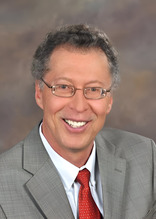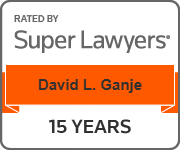
Call Our Firm: 605.385.0330
Commercial Transactions & Litigation, Environmental Law, Natural Resources Law, & Energy Law

Archive for the ‘New York & South Dakota Law’ Category
How Can I Turn Around from Covid-19?
In this piece I discuss legal problems the business and ag world now face. I have seen this rodeo before. I have ridden the bronco. It hurts when you fall. (I prefer falling off of a motorcycle — the drop is less severe).
Don’t kid yourself. Don’t act like the coronavirus effect on the region’s economy is something that will just pass. Yes, it will pass. But it will take a damn long time to pass. Further, this will be a depression, and one not known by history because of the intricate modern phenomenon of government regulations which are indelibly integrated into every aspect of the business and agricultural world.
Those of you old enough will remember how long it took to get out of the 1980s ag recession. I have seen and worked in two recessions in my career — and this one is bigger and quite distinct from either of those. Start now to plan. Start now to deal with the complicated financial problems in the ag and ranch world. They are here.
A modern economy is not simple. It is an admixture of market stupidity, unresponsive government programs, bad banking regulations and management, and overall misjudgments by most everyone. Government won’t bail out the problem. Government might help some, but it is not the remedy. Government can’t foresee, can’t plan, can’t address and can’t correctly manage.
I know, I have also worked for government.
So let’s start our review. Consider that when I use the term business it means those in business whether ranchers, farmers, suppliers, service providers, banks and financial institutions. All of whom I have represented in my career. When I taught bankruptcy law, I used a medical analogy: I told the young legal scholars that a bankruptcy filing is akin to surgery. Surgery should always be treated as the last option.
In the medical field, a reasonable first option is an antibiotic. Here, the antibiotic is a “workout” or a “turnaround,” each of which are bankruptcy alternatives. These alternatives have value and should be attempted by both creditors and debtors as a viable option, not just a throwaway line. I have successfully represented debtors and creditors in turnarounds and workouts. Resolving “stressed-business” issues out of court makes sense when the option is there.
Financial restructuring and workouts involve working closely with a business’s creditors to create, or “workout” plan (often a written contract) to restructure business debts while allowing the business to remain viable. This process allows the business entity to negotiate its debts in a way that retains profitability without involving the court system. This is not as difficult as it might sound — creditors often share the same objective of returning a financially stressed business to good financial health in order to ensure their debts are paid.
A “turnaround” is a separate process from a workout. It may also use the availability of restructuring and workouts, but a turnaround has several other components. A turnaround will generally restructure operational aspects of the business. This may be the solution when the problem lies deeper in the company than lack of cash flow. Where a creditor will not restructure the debts owed to it, a turnaround will be utilized to find alternative financing or new ownership.
Another possibility in a turnaround is the sale of ownership or a portion of ownership, which can provide liquidity at the expense of a change of control of the business.
If the company’s goal is to continue in business, particularly under current ownership, then a creditor or a lender workout should be considered. If new ownership, or a sale of the business in whole or in part, is an acceptable outcome so long as the business is preserved as a going concern, a turnaround can be considered as well.
The process of financial restructuring and negotiating a workout with business creditors is something that should be considered to avoid the expenses and bureaucracy related to a bankruptcy proceeding. The Chapter 11 bankruptcy reorganization process is expensive and time-consuming. The goal of business turnarounds or financial restructuring is to provide a cost effective approach by way of a ‘non judicial/non bankruptcy’ business reorganization, to restructure business debts.
Courtship and finances have something in common: timing is everything. When a business is in a stressed situation, neither the business nor its creditors should go in stand-by mode. Negotiations should begin immediately. In both the workout and turnaround, all parties must agree to the terms; both are matters of serious negotiation to be done with all deliberate speed.
Bankruptcy proceedings are not the only way to save a business — sometimes a well-prescribed antibiotic can halt the damage and let the healing begin.
David L Ganje
Ganje Law Offices
Web: lexenergy.net
(605) 385-0330
Battle Over Drainage Permit Heats Up
Mount Vernon farmer files second lawsuit to stop drainage project, while first permit could go to South Dakota’s high court
Written By: Marcus Traxler | Sep 14th 2020 – 6pm.
The matters of a Davison County drainage permit have become more entangled in the court system, with the results of the first decision being appealed to the South Dakota Supreme Court and a second permit for the same landowner drawing a new lawsuit.
John Millan filed a second permit for a drainage permit in Beulah Township on Aug. 6, which was shortly after his first permit was voided by a First Circuit Court ruling. That permit has drawn a second lawsuit from neighbor Kenneth Hostler, who filed a new suit on Aug. 31 against Millan and Davison County asking for a permanent injunction and declaratory judgment to void the new permit.
In the first court matter over the drainage permit that was initially approved in March, Judge Patrick Smith sided Hostler, writing in his decision that Millan’s initial application was missing key information in order for the Davison County Drainage Commission to make a decision. Millan and the county have appealed the first decision to the South Dakota Supreme Court, according to court documents filed Sept. 4.
In the appeal, Millan’s attorney, Gary Lestico, of the Rinke Noonan law firm in St. Cloud, Minnesota, claims among other items, that the trial court improperly considered matters outside of applicable South Dakota state law for permissible drainage of water and had erred in deciding that Millan didn’t meet his burden of proof in the permit application and erred deciding that the Davison County Drainage Commission had abused its discretion in initially granting the permit in March.
When Millan applied for another permit in early August, he sought administrative approval through Davison County Planning and Zoning Administrator Jeff Bathke, who oversees the county’s drainage processes. Bathke approved the permit on Aug. 10.
Drainage permits in Davison County can be approved by the administrator without going to the county’s Drainage Commission if they meet specific criteria. That criteria includes drainage projects that involve the county’s major creeks and rivers, such as Firesteel Creek, Enemy Creek, the James River or Dry Run Creek. The criteria also allows for approval if signed waivers are received for upstream landowners within a half-mile, downstream landowners within 1 mile and landowners within a quarter-mile of the center of the drain area. Six signed waivers, including one from Millan, were included with the permit, and based on the county’s criteria and mapping, Hostler was not a landowner who had to sign a waiver to allow the permit to proceed.
In his most recently filed lawsuit, Hostler alleges the new project application was “illegally approved.” He says the project will drain water onto his property in southeast corner of Section 19 in Beulah Township, which is located immediately to the north of Section 30, where Millan’s drainage project is planned in the southern half of the section.
“The method and place for discharging surface waters onto Plaintiff’s land in the new project is the same method and place for discharging surface waters onto Plaintiff’s land under a drainage permit voided by the Circuit Court in related litigation,” wrote Hostler’s attorney, David Ganje, of Sun City, Arizona.
The land in question is about 5 miles east of Mount Vernon and about 8 miles west of Mitchell near Interstate 90. Millan’s permit calls for 157,277 feet of drainage tile on his land, draining 320 acres of property, with the water eventually draining into Dry Run Creek.
The Davison County Commissioners decided earlier this month to retain James Davies, of Alexandria, as the county’s attorney in the matter due to conflicts involving Davison County’s staff attorneys.
Dewey Burdock: Will South Dakota relinquish its responsibility?
Powertech (USA), Inc., a wholly owned subsidiary of Azarga Uranium Corp., is a uranium mining company with pending applications to several state and federal boards and agencies for the development of an in situ uranium mine operation in Custer and Fall River Counties. This project, known commonly as the Dewey Burdock project, would be the most significant mining operation in the state in the last twenty years. The project is an in situ uranium mining operation which would use local groundwater aquifers for uranium extraction, and for the subsequent disposal of process-related liquid waste.
The mining project has been in the application stage since 2009. No final mining authorization has been granted by the various government agencies with jurisdiction over licensing, mining and water permits. Important issues remain outstanding and undecided. The wheels of justice, it is said, grind slowly but grind exceedingly fine. Let us see.
Some of the government agencies with authority to issue major regulatory permit approvals necessary for this project include the Nuclear Regulatory Commission, the Environmental Protection Agency, the Bureau of Land Management, the SD DENR, the SD Board of Minerals and Environment, and the SD Water Management Board. In this opinion piece I limit my comments to only part of this complicated dance of the multitudes. This piece discusses state protection of water sources. I treated financial and decommissioning issues and background questions regarding water resources in other opinion pieces.
When several agencies are involved in approval of a single project, a board might relinquish its responsibilities by narrowly interpreting the scope of its authority or by deciding not to exercise authority as a matter of discretion. Complex and fragmented multiple-agency oversight of a big project runs the risk of a board’s over-reliance on the authority or expertise of different government agencies. This is a dangerous form of decision-making. For South Dakota boards to defer their legal obligations on significant natural resource issues to other government agency’s inclinations is an ill-advised undertaking. He who sups with the devil must bring a long spoon.
As a result of the fragmented multiple-agency oversight, I am concerned South Dakota’s boards may limit their existing and established authority. It is an established principal that state laws which do not directly interfere with (read preempt) the operation of federal programs or federal laws continue to be valid and enforceable by the state.
In the Powertech uranium mining procedure the SD Board of Minerals and Environment stated it has a “limited jurisdictional role in this matter especially where the principle of “dual regulation” would prevent the Board from acting.” Powertech has argued in favor of such Board deference to other non-state agencies. Powertech asserted the Board should consider the EPA’s actions as strong evidence that the proposed project water use is beneficial and in the public interest; and also argued the NRC’s license to Powertech is “compelling evidence” that Powertech’s proposed use of state waters is beneficial and in the public interest. Nevertheless, South Dakota boards are required by established state policy and by statute to conserve groundwaters of the state and maintain the quality of groundwaters for present and future beneficial uses through the prevention of pollution and the control of water degradation. These are considerations within the clear jurisdiction of South Dakota, its agencies and boards.
Let us look at some steps taken, or not taken, to protect groundwater in the area of the project. First consider these comments by staff members of the U S Geological Survey given in 2009 paper at an international uranium symposium, “To date, no remediation of an ISR [in situ uranium mining] operation in the United States has successfully returned the aquifer to baseline conditions.”
Regionally, near the project site, four principal aquifers are used as major sources of water supply. Several permits for use of water are pending before different agencies. Two requested water-rights-withdrawal permits are pending before state boards. The two water permit applications request the right to withdraw 8,500 and 551 gallons per minute. The Powertech application indicates most of the water withdrawn will be continuously reinjected as part of the mining process. Shouldn’t the water quality of reinjected water be tested before it is reinjected? It is unclear how much water is to be reinjected. Should not such requirements be included before granting a permit approval?
In its June 2012 Water Permit Application, Powertech acknowledged there are no aquifer baseline tests completed by the applicant at the project site. Powertech argued that pre-licensing monitoring wells are not permitted until after a license is issued. However, the NRC Licensing Board in 2012 in a separate mining application ruled that wells intended to collect background data or for background aquifer testing are permissible and are not considered the construction phase of a project. Why should water and mining permits be granted without the benefit of the results of such tests? As the reader will learn, South Dakota also has the authority to require this type of baseline aquifer testing before a permit is considered or granted.
The DENR recommended approval of Powertech’s general mining permit to the SD Board of Minerals and Environment. As a part of its recommendations and conditions the DENR suggests that in the event there is a violation of ‘water quality standards’ Powertech should then be required to develop and submit a site-specific mitigation plan. A contingency mitigation plan for possible water quality events should be a precondition to filing any large mining permit application.
The filed Powertech water applications report that groundwater restoration or aquifer restoration will be performed under any NRC requirements. Powertech will be required by its NRC license and federal regulations to restore groundwater quality to a) pre-operational baseline water quality, b) federal drinking water standards, or c) an alternate concentration limit approved by the NRC as protective of human health or the environment. The NRC concluded, apparently without any baseline testing by Powertech on aquifers at the site, that the applicant’s proposed groundwater restoration methods will restore groundwater to ‘federal’ standards. This is an indirect assurance concerning the protection of state waters. Trusting too much to Big Brother invites one to become an agent of Big Brother. At a minimum South Dakota should have requested baseline testing. In addition, a legal mechanism known as an MOU (Memorandum of Understanding) allows a state such as South Dakota to take responsibility for regulation concerning groundwater protections.
In a well-written legal brief by its attorneys, Powertech argued in 2013 that South Dakota does not have authority to regulate most aspects of uranium mining. That position was not correct law then and is certainly in error today. In 2019 the U S Supreme Court in a uranium mining case upheld a state mining law and ruled that federal law does not preempt state mining law. Justice Gorsuch stated, “But Congress conspicuously chose to leave untouched the States’ historic authority over the regulation of mining activities on private lands within their borders.” This places all the more focus on South Dakota to do the right thing.
David Ganje practices law in the area of natural resources, environmental and commercial law with Ganje Law Office. His website is Lexenergy.net.
David L Ganje
Ganje Law Offices
Web: lexenergy.net
605 385 0330



